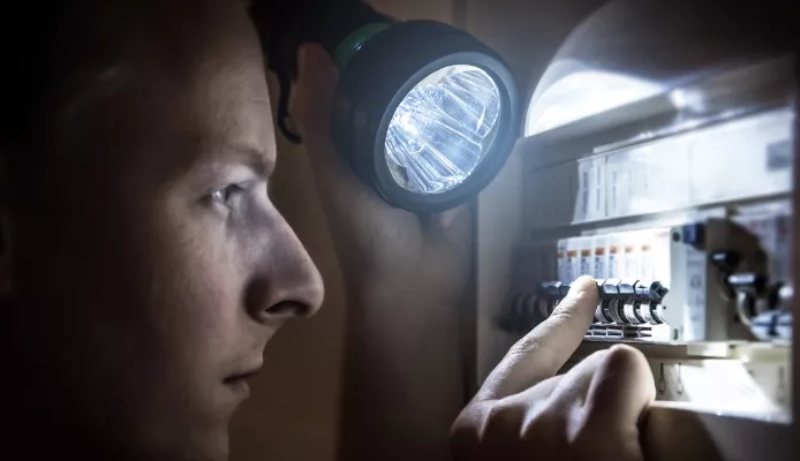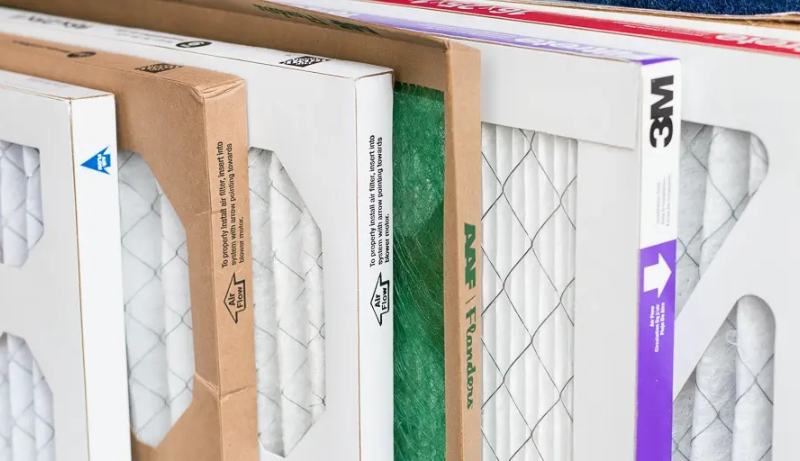A gas furnace is a reliable and efficient heating source that many homeowners and building managers rely on to keep their spaces warm and comfortable during the cold months. However, a common question that arises is whether a gas furnace can still function when the power goes out. In this article, we will explore the workings of a gas furnace and shed light on its dependence on electricity.
The Modern Gas Furnace and Its Electrical Components
While gas furnaces are indeed powered by natural gas or propane to generate heat, they are not entirely self-sufficient when it comes to power. Modern gas furnaces are equipped with various components that require electricity to operate effectively. These components ensure the safety, control, and efficient heating of your home. Here are some critical electrical parts in a gas furnace:
- Circuit Control Board: Often referred to as the furnace’s “brain,” the circuit control board is responsible for receiving instructions from the thermostat and sending them to other furnace components. It plays a crucial role in regulating the furnace’s operation, and without electricity, it cannot function. Instructions from the control board are necessary even to ignite the furnace.
- Thermostat: While some thermostats have batteries for backup power, many rely on a continuous 24-volt supply from the furnace to operate. The thermostat’s primary function is to adjust the temperature settings and control when the furnace turns on and off. When there is a power outage, the thermostat won’t be able to communicate with the furnace.
- Blower Motor: The blower motor is responsible for circulating the heated air throughout your home’s duct system. Without electricity, the blower motor cannot function, and the warm air will not be distributed as intended.
- Ignition System: The ignition system is essential for lighting the gas burners. It includes components like the hot surface ignitor and the flame sensor, all of which require electricity to ignite the furnace. Even the wall switch used to turn on the furnace needs electrical power.
Understanding the Need for Electricity
In summary, modern gas furnaces rely on electricity to power critical components that control ignition, temperature regulation, and air circulation. Without electricity, these components cannot perform their functions, rendering the gas furnace inoperative.
However, it’s essential to note that gas furnaces are distinct from electric furnaces. Electric furnaces solely use electrical resistance to generate heat, while gas furnaces rely on the combustion of natural gas or propane. Here’s a quick comparison between the two:
| Feature | Electric Furnace | Gas Furnace |
|---|---|---|
| Fuel source | Electricity | Natural gas or propane |
| Cost to operate | Typically more expensive | Typically less expensive |
| Environmental impact | Emits no harmful gases | Emits carbon monoxide and others |
| Maintenance | Requires less maintenance | Requires more maintenance |
| Initial cost | Typically less expensive | Typically more expensive |
| Location | Can be installed anywhere | Requires access to a gas line |
Staying Warm and Safe During Power Outages
In cases of power outages, a gas furnace that relies on electricity will not provide heat. To ensure your comfort and safety during such situations, consider having backup heating options available, such as a generator, wood-burning stove, or portable heaters. Additionally, regular maintenance of your gas furnace can help prevent issues and ensure its efficient operation when you need it most.
While gas furnaces offer effective heating, understanding their dependence on electricity is crucial for preparedness, especially in regions prone to power interruptions. By having a backup plan in place, you can stay warm and comfortable even when the lights go out.
Restoring Your Gas Furnace After a Power Outage: Troubleshooting Steps
A power outage can be inconvenient, especially when it disrupts your heating system. If your gas furnace stops working after a power outage, there’s no need to panic. Several troubleshooting steps can help you restore your furnace’s functionality and ensure your home remains warm and comfortable.
1. Check the Thermostat Settings
Begin by checking your thermostat. Ensure that it is set to the heating mode and that the temperature setting is above the current room temperature. Sometimes, a simple thermostat adjustment can resolve the issue.
2. Inspect Circuit Breakers
Power outages can cause circuit breakers to trip, interrupting the electrical supply to your furnace. Go to your electrical circuit breaker box and check for any tripped breakers related to your heating system. If you find any, reset them.
3. Locate and Reset the Furnace
If your thermostat and circuit breakers are not the problem, your furnace may require a reset. Follow these steps to reset your gas furnace:
a. Locate the reset switch on your furnace. This switch is typically red or yellow.
b. Press the reset switch. This action should reset the furnace.
c. Wait for a few minutes to see if the furnace starts operating. If it does, your problem may be resolved.
4. Consider Professional Help
If none of the above steps restore your furnace’s operation, it’s time to seek professional assistance. Contact a licensed HVAC technician to diagnose and repair the issue. They have the expertise and tools needed to identify and address more complex problems.
You can find HVAC professionals in your area by calling 1-877-342-2087 or searching online for local heating and cooling service providers.
How to Turn on a Gas Furnace Without Electricity
A gas furnace, as a modern heating system, relies on electricity to power essential components such as the fan and control systems. Therefore, it cannot be operated without electricity. During a power outage, if you need heat, consider alternative heating sources such as:
- Fireplace: If you have a wood-burning or gas fireplace, it can provide warmth during a power outage. Make sure you have an adequate supply of fuel.
- Wood Stove: A wood-burning stove is an excellent source of heat that does not require electricity. Ensure you have a stockpile of firewood.
- Portable Heater: Portable heaters, especially those powered by propane or kerosene, can provide localized heat without electricity.
- Generator: Some newer gas furnaces come with battery backup systems that allow limited operation during a power outage. Check your furnace’s manual or contact the manufacturer to see if this feature is available.
Furnaces That Work Without Electricity
In the past, there were furnaces known as “Octopus” furnaces that did not require electricity to operate fully. These furnaces were more common in the early 20th century, particularly in the 1940s. They used oil or coal for heating and relied on the principle that hot air rises.
Octopus furnaces featured pipes and lines that resembled octopuses, hence their name. While these furnaces did not depend on electricity, they were expensive to install and maintain. Today, they are considered outdated, and most homes have upgraded to more modern heating systems.
Exploring Alternative Heating Solutions
During a power outage, your gas furnace may not be an option due to its dependence on electricity. In such cases, consider alternative heating sources to keep your space warm. Propane or paraffin heaters, wood-burning stoves, and portable heaters can provide heat without relying on the utility grid.
For a more comprehensive and long-term solution, consider investing in a generator (genset) powered by diesel, natural gas, or propane. A genset can supply electricity to your central heating system and other essential appliances, ensuring your home remains comfortable even when the power is out.
Furnaces That Work Without Electricity and Keeping Warm During Outages
Electricity is a lifeline for many modern conveniences, including heating systems. However, there are certain types of furnaces that can operate without electricity. While these may not be common in modern households, they can be valuable alternatives during power outages or in situations where electricity is not available. In this article, we’ll explore furnaces that can work independently of electrical power and provide tips on staying warm without electricity.
Furnaces That Operate Without Electricity
- Gravity Furnace: Gravity furnaces are older heating systems that rely on natural convection to distribute heat throughout a home. Unlike modern furnaces, they lack a blower motor and do not require electricity to function. Instead, they use the principle that hot air rises to circulate warm air throughout the living spaces. Gravity furnaces are not commonly found in modern homes but can still be operational in some older residences.
- Kerosene Furnace: Kerosene furnaces use kerosene as their primary fuel source, and they do not rely on electricity for operation. These furnaces are often used in off-grid or remote locations where electricity may be limited or unavailable.
- Wood-Burning Furnace: Wood-burning furnaces are a traditional heating option that uses wood as their fuel source. They do not require electricity to generate heat and are still used in some homes, particularly in rural areas. Proper maintenance and safety precautions are essential when using wood-burning furnaces.
- Oil Furnace with a Standing Pilot Light: Some oil furnaces feature a standing pilot light that remains continuously lit. This pilot light allows the furnace to ignite the burners without the need for electricity. However, it’s important to note that many newer oil furnaces use electronic ignition systems that do require electricity.
While these furnace types offer alternatives to traditional electrically powered furnaces, they are not as common or energy-efficient in modern homes.
Staying Warm Without Electricity
When faced with a power outage or circumstances where electricity is unavailable, there are several ways to keep your living space warm:
- Use Fireplaces: If you have a fireplace, whether wood-burning or gas, utilize it to generate heat. Ensure you have an ample supply of fuel or gas.
- Candles: Candles can provide a surprising amount of heat. Place several lit candles in a safe location, but exercise caution, especially around children and pets.
- Wood Stove: If you have a wood-burning stove, it can effectively heat a room. Follow safety guidelines when operating a wood stove.
- Gas Stove: If you have a gas stove, you can use it to generate heat by lighting the oven flames and leaving it open. Ensure proper ventilation.
- Body Heat: Cuddle up with blankets and wear warm clothing to retain body heat. This can be particularly effective for couples or groups of people.
- Portable Heaters: Portable heaters, such as propane heaters, can provide localized heat. Ensure you follow safety instructions when using these devices.
- Insulation: Proper insulation can help retain heat within your home. Check your insulation and consider adding more if necessary.
Frequently Asked Questions
Do I need to turn off the gas when the power goes out? No, it is not necessary to turn off the gas supply to your furnace when the power goes out. The gas valve supplying fuel to the furnace typically continues to function normally during power outages. However, some newer furnace models have safety systems that automatically shut off the gas in the event of a power outage. Check your furnace manual or contact the manufacturer to determine if this applies to your furnace.
Can I run my gas furnace with a generator? Yes, it is possible to run a gas furnace with a generator, but several considerations must be addressed. Ensure that the generator is rated to handle the electrical load required to run the furnace, that it is properly grounded and connected to the furnace’s electrical system, and that a transfer switch is in place for safe switching between generator and utility power. Keep in mind that using a generator to power your furnace for extended periods can be costly and may not be the most efficient heating solution, especially for larger homes. Consult a professional electrician or HVAC technician for proper installation and safety measures.




Leave a Reply